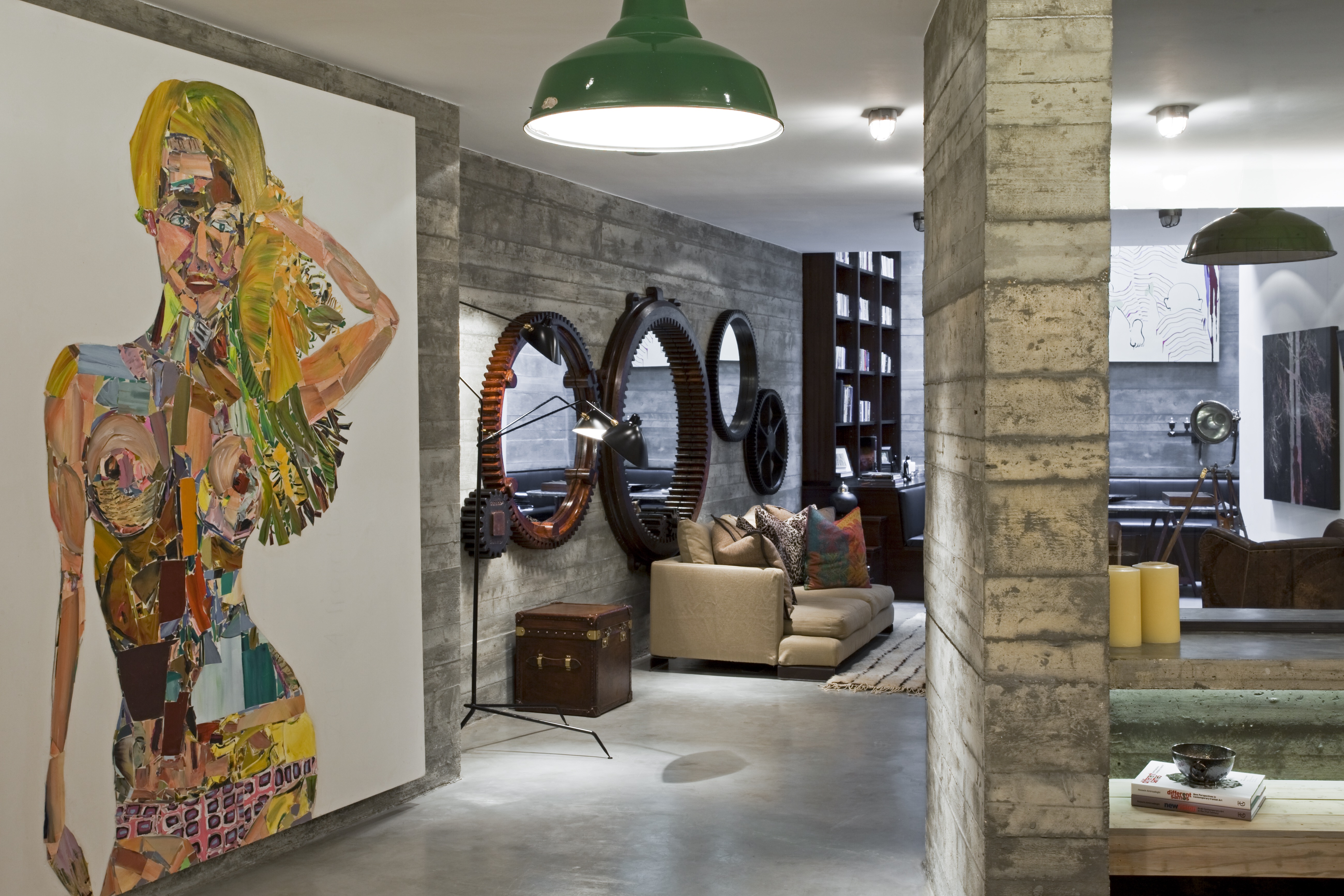The word “sustainable” may feel like a buzz word as it is frequently dropped into conversations, adverts and a hot topic in the media. Rather than a trend it is something that should be considered in all aspects of our lives. The world of design has a great responsibility to the sustainability of our planet by influencing our lifestyles, habits and what we choose to use and purchase. You may wonder how you can make changes that can make an impact and we have several styling tips to ensure your home embraces sustainability so you can enjoy it knowing that it limits waste and that each piece is carefully chosen. One fundamental way to ensure sustainability is to keep a running theme in your home of sustainable, easily renewable or recycled materials for furniture, fabrics and accessories.
Waste is a significant adversary to sustainability and that is why we always look at our clients’ existing furniture, lighting and textiles to adapt them to their new interiors. In turn this starts a dialogue with our clients as we discover the stories of the pieces that they have. It is important to have items in your home that are meaningful and will stay with you for a long time or become something that you will pass to someone else. You may be tired of certain pieces that you have had for a while or regret buying, however, changing a single element can refresh the look. For example repainting a piece or changing the handles or legs can make a dramatic difference. You could pick a colour that fits well into your interior scheme and paint old furniture to suit it. For handles and legs salvage yards often have interesting options which can be used giving a double element of sustainability to your design as you reinvent an old piece, prolonging its use, and use something salvaged. You can retain the handles and legs you removed for another piece in the future or donate them to the salvage yard. Relocating furniture in your home can also refresh a space.
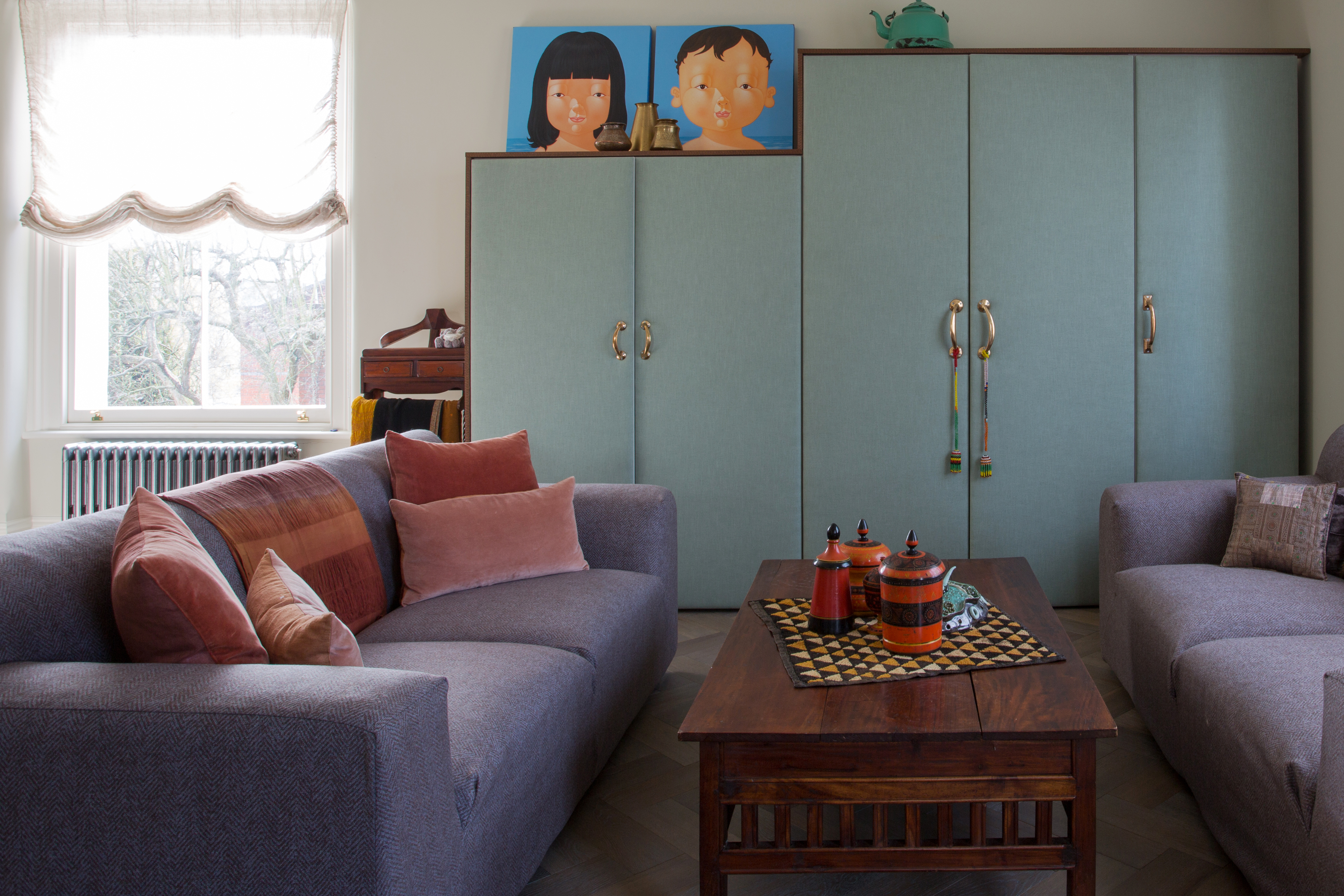
In this bedroom the bedside tables were repainted a colour that suited the new interior scheme and the wardrobe doors were reupholstered, giving fresh looks to the pieces integrating them into the new bedroom.
When you do buy interior items such as curtains, cushions, and furniture focus on natural materials, in particular recycled natural materials, such as cotton, linen, cork, reclaimed timber, leather, wool, bamboo and natural fibre mattresses. Bamboo is generally agreed to be one of the most sustainable materials with some species even growing up to three feet in 24 hours. It can be used as a fibre for fabrics and rugs, for blinds and instead of timber for furniture and flooring. The world of sustainable materials is an exciting one with new ideas being tested and used from the leather alternative Fruit Leather being developed in The Netherlands and tiles made from coffee waste by Atticus Durnell.
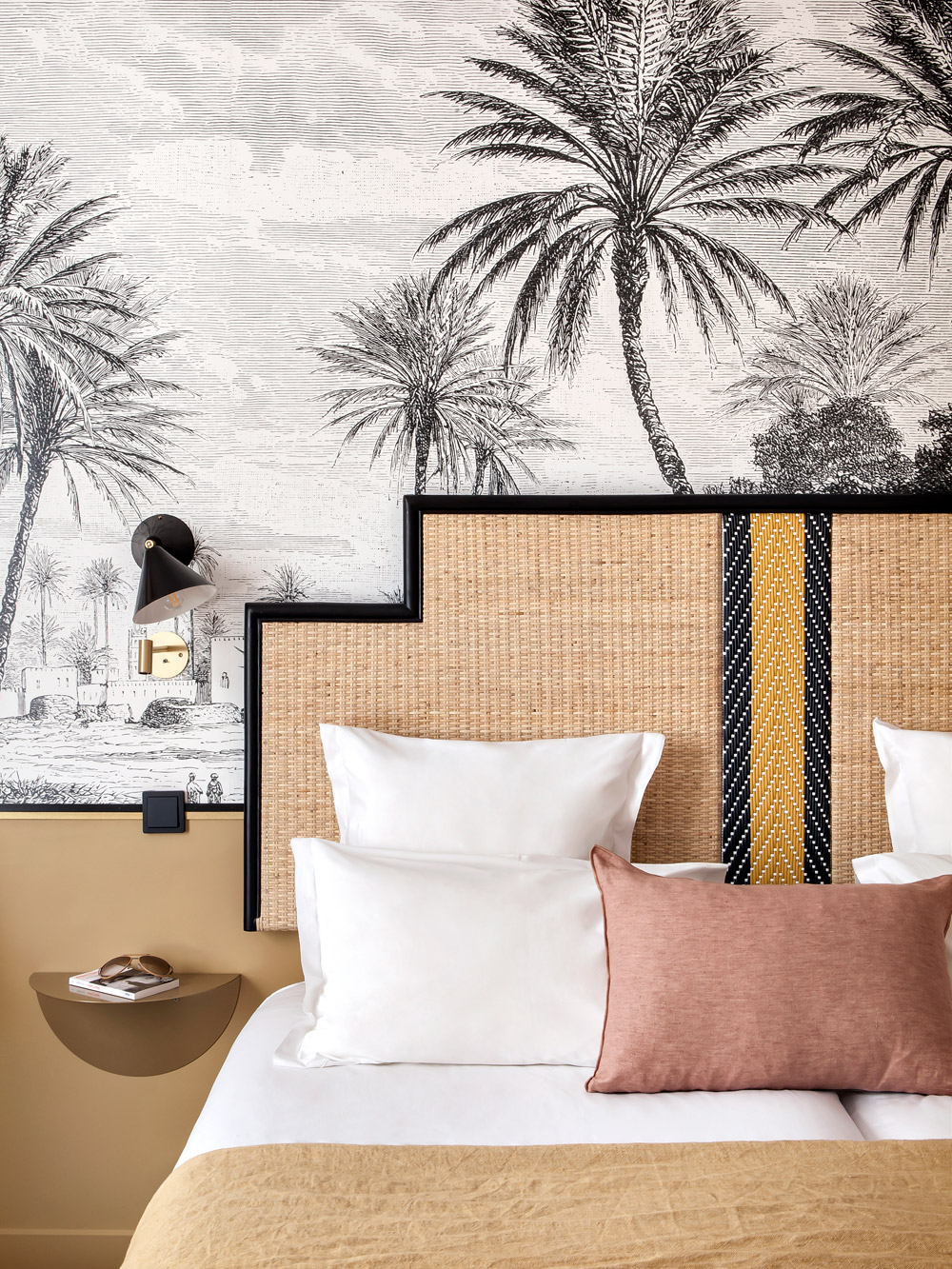
These handmade headboards by Parisian brand Maison Drucker are made with rattan and castor oil. The woven rattan is made from the stalks and peeled skin. Rattan is the second fastest growing material in the world, regenerating in 5 -7 years. As it is a vine harvesting it doesn’t damage big trees, thereby safeguarding rainforests. The decorative panel in the centre of the headboard is made from a strong and durable fibre derived from castor oil.
When it comes to accessories and decorations choose candles made from natural ingredients and refillable candles are a good option as they reuse a glass container. Another natural way to introduce scent into your home is to use essential oils in a diffuser. Opt for locally grown flowers or flowers cut from your garden or window sill. Growing herbs at home adds a vibrant touch of green which uplifts every interior as well as being essential to cooking. Textiles such as curtains and throws can be reused by making them into cushion covers. Old plates can decorate the walls and crockery that may be broken can still be beautiful as decorative pieces, especially if it is repaired using the Japanese method of Kintsugi. When decorating your walls with photos, prints and paintings, find frames in vintage and antique shops rather than buying new frames. Mixing styles of frames adds an interesting design element.
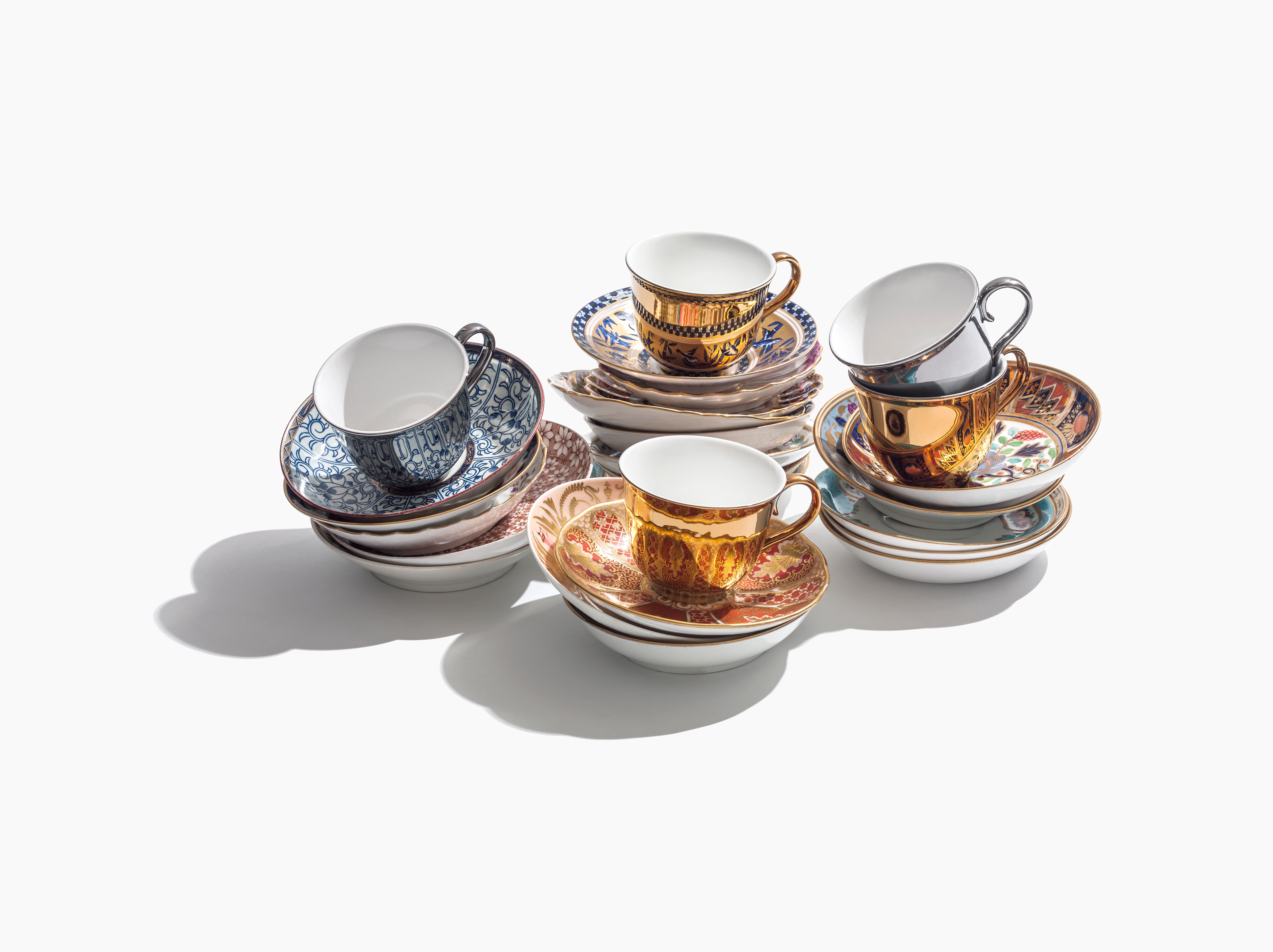
Some designers reinvent old pieces in very clever ways such as these mirrored teacups that sit on vintage saucers by British designer Richard Brendon. More teacups gets broken than saucers so Richard’s idea is an ingenious way of giving these lone saucers a purpose whilst making the set contemporary with the mirrored finish of the teacups.

Mishcatco is an Indian rug company, supplying globally, which uses the excess silk yarn from the sari industry in its rugs.
As designers we love getting into the history of pieces and often take our clients to vintage design stores where unique pieces of furniture and lighting can be bought. By repairing and restoring existing pieces we lessen the burden on new resources and pay respect to the design of previous decades. Often these pieces are timeless and will stay with clients moving with them from home to home. On the other hand, when buying new pieces you can look at the sustainable aspects of them such as what materials are used and how far the items have travelled. Local designers and makers using local materials is a great way forward as it will have a low carbon footprint.
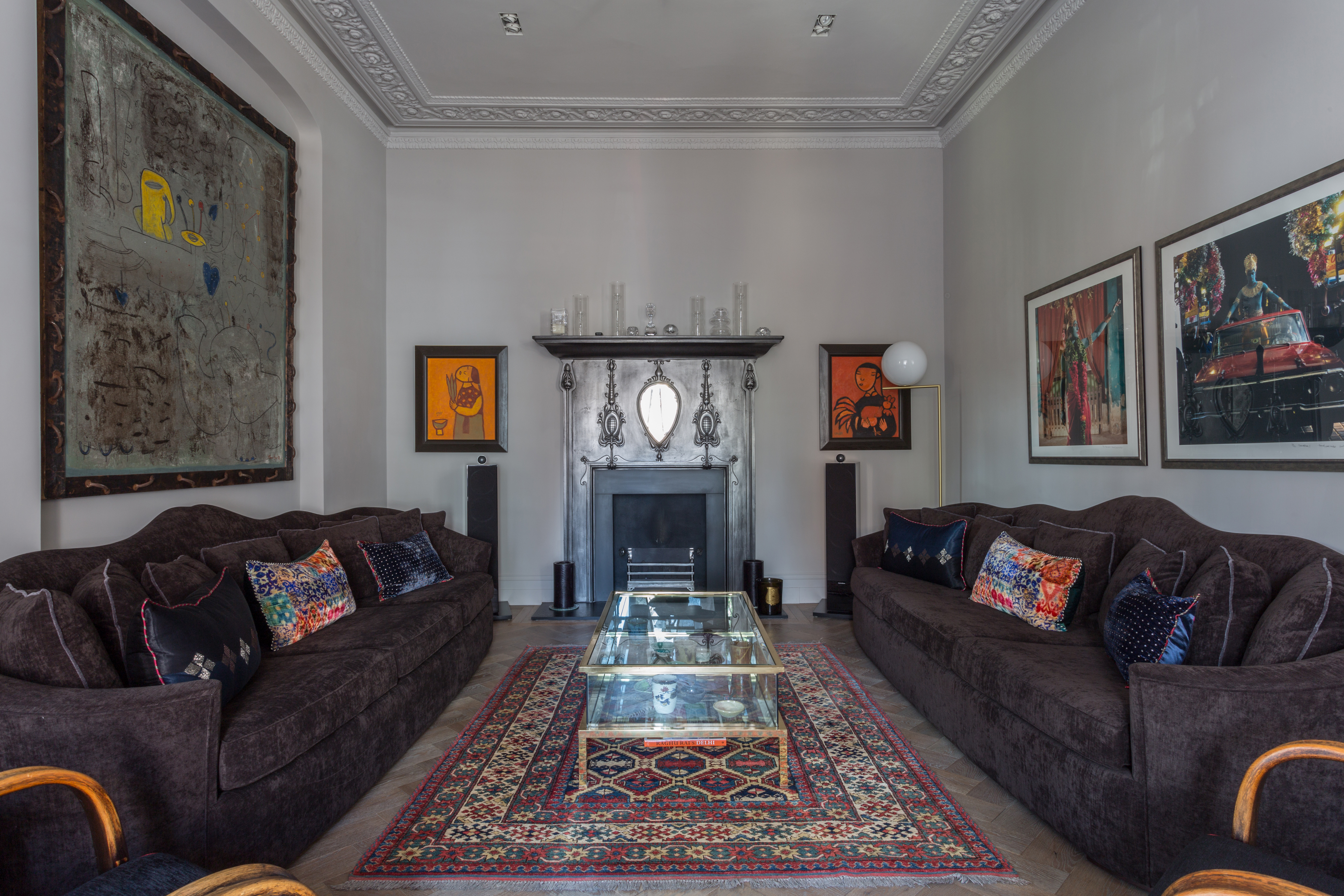
By sourcing reclaimed materials such as flooring, salvaged fireplaces and vintage furniture and lighting, interiors attain pieces of history and ease the burden on new resources. This interior displays a reclaimed fireplace in an unusual design with an inset mirror.
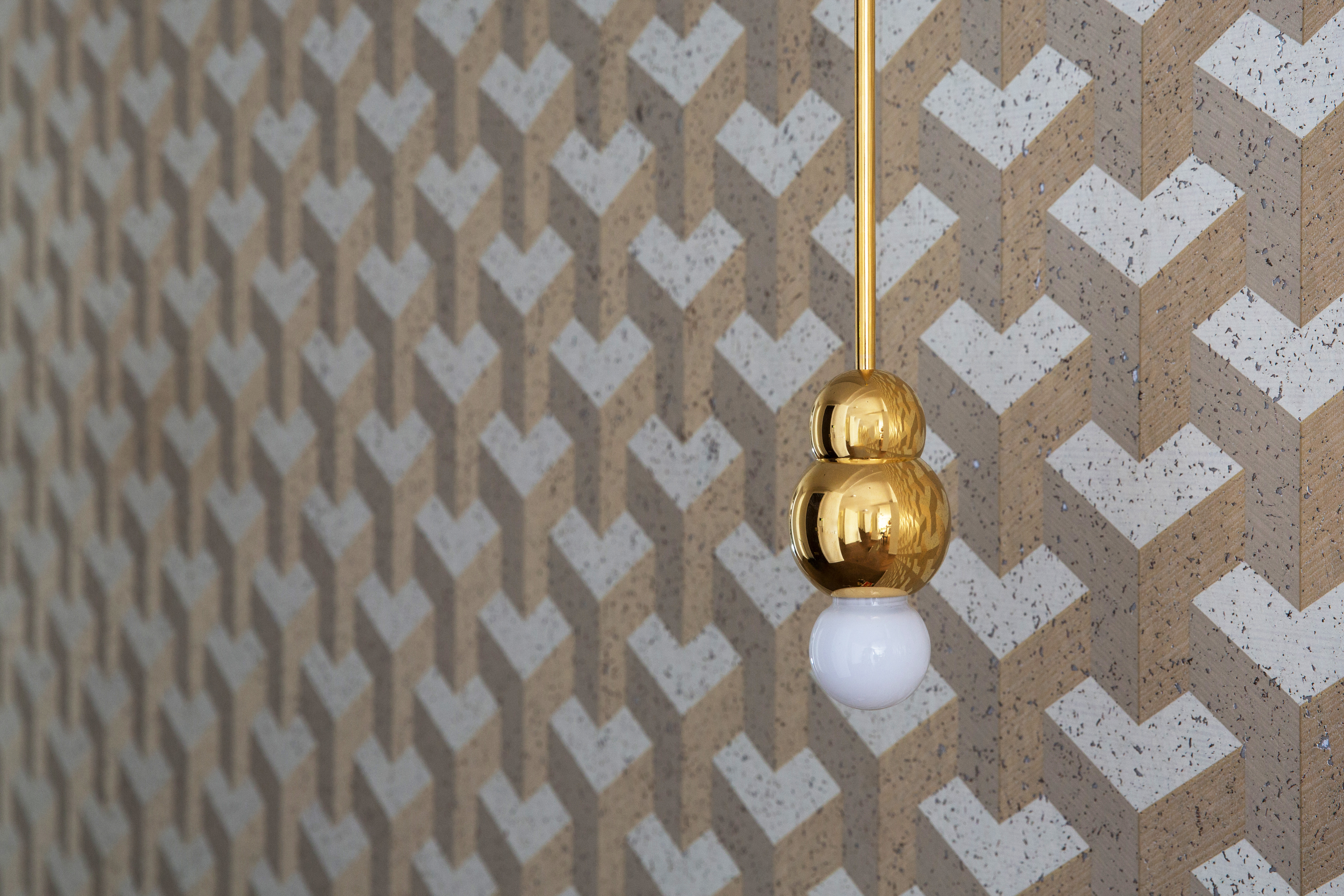
Cork is a beautiful natural material that is very versatile as it can be used for furniture, tiles and wallpaper as shown in this photo of block-printed wallpaper. It is bark harvested primarily from cork oak trees that will continue to grow and reproduce cork.
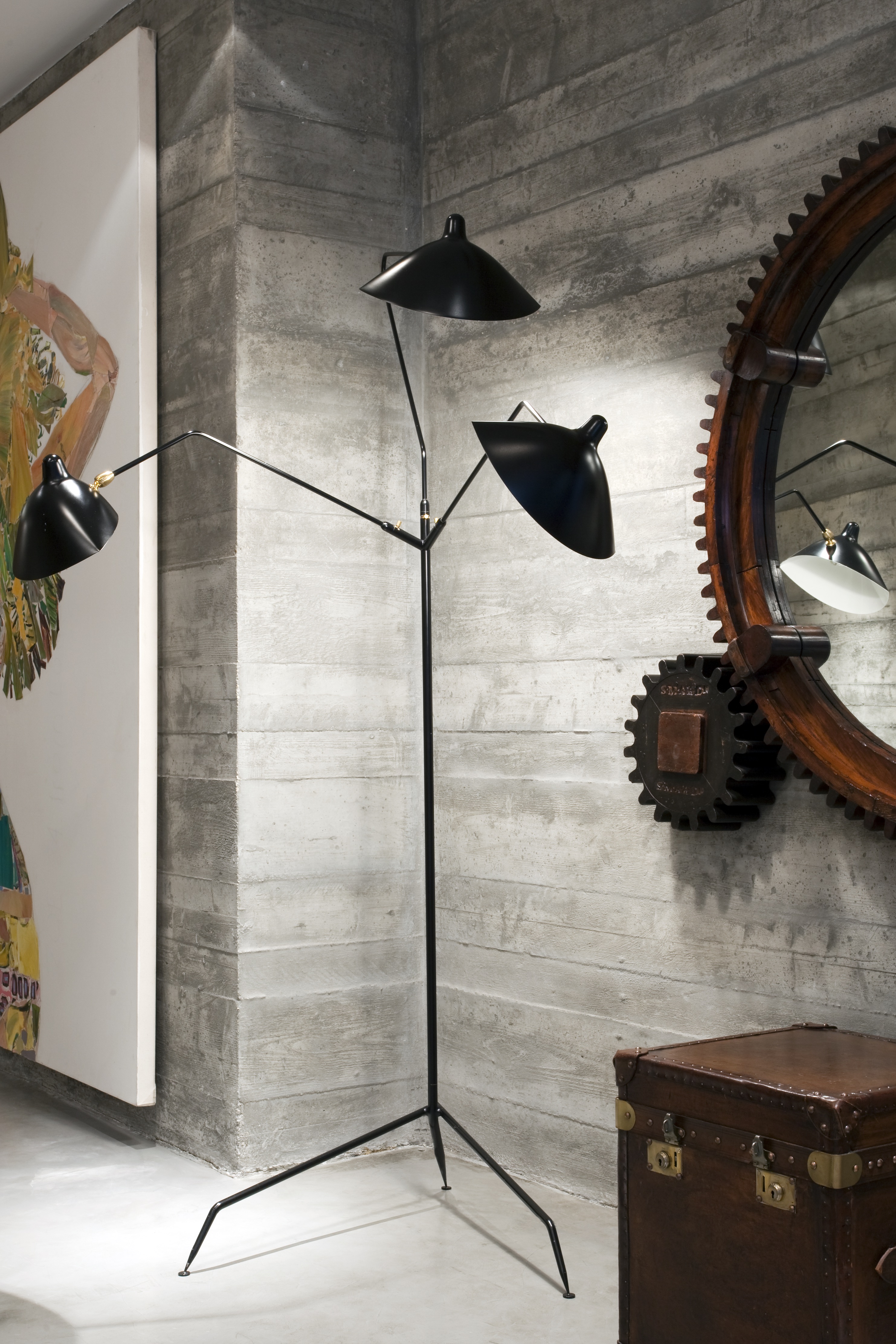
This original Serge Mouille light was sourced for a residential project. It is a timeless piece by an ever popular designer. You can find them on 1st Dibs.

This wardrobe, armchair and side table were all vintage pieces that were spruced up for their new home.
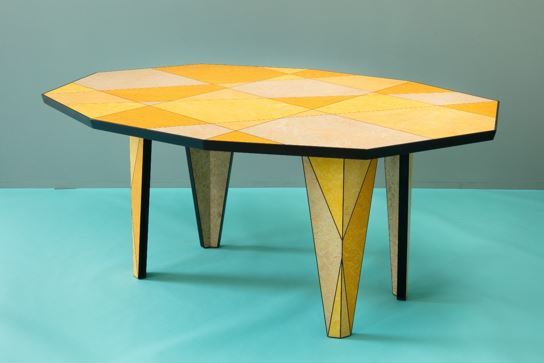
This table by London based Italian designer, Martino Gamper, is made with linoleum which is used as flooring. Linoleum has linseed oil as one of its main materials and was originally developed in England in the 1860s by Frederick Walton. Gamper’s use of the product in this way shows it off in a new light as well as being a durable surface for dining and working on.
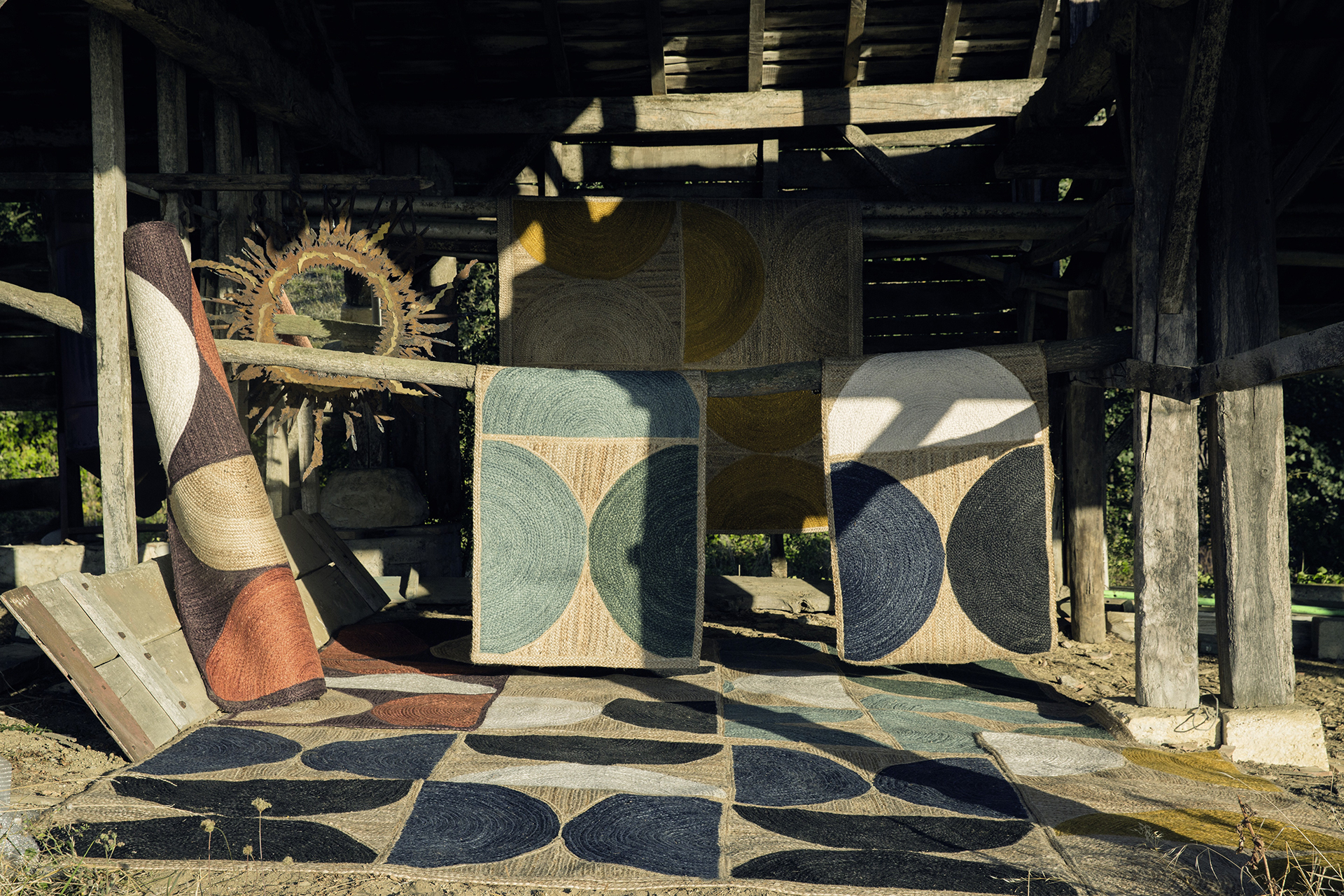
The French brand, Elitis, makes beautiful rugs from jute.
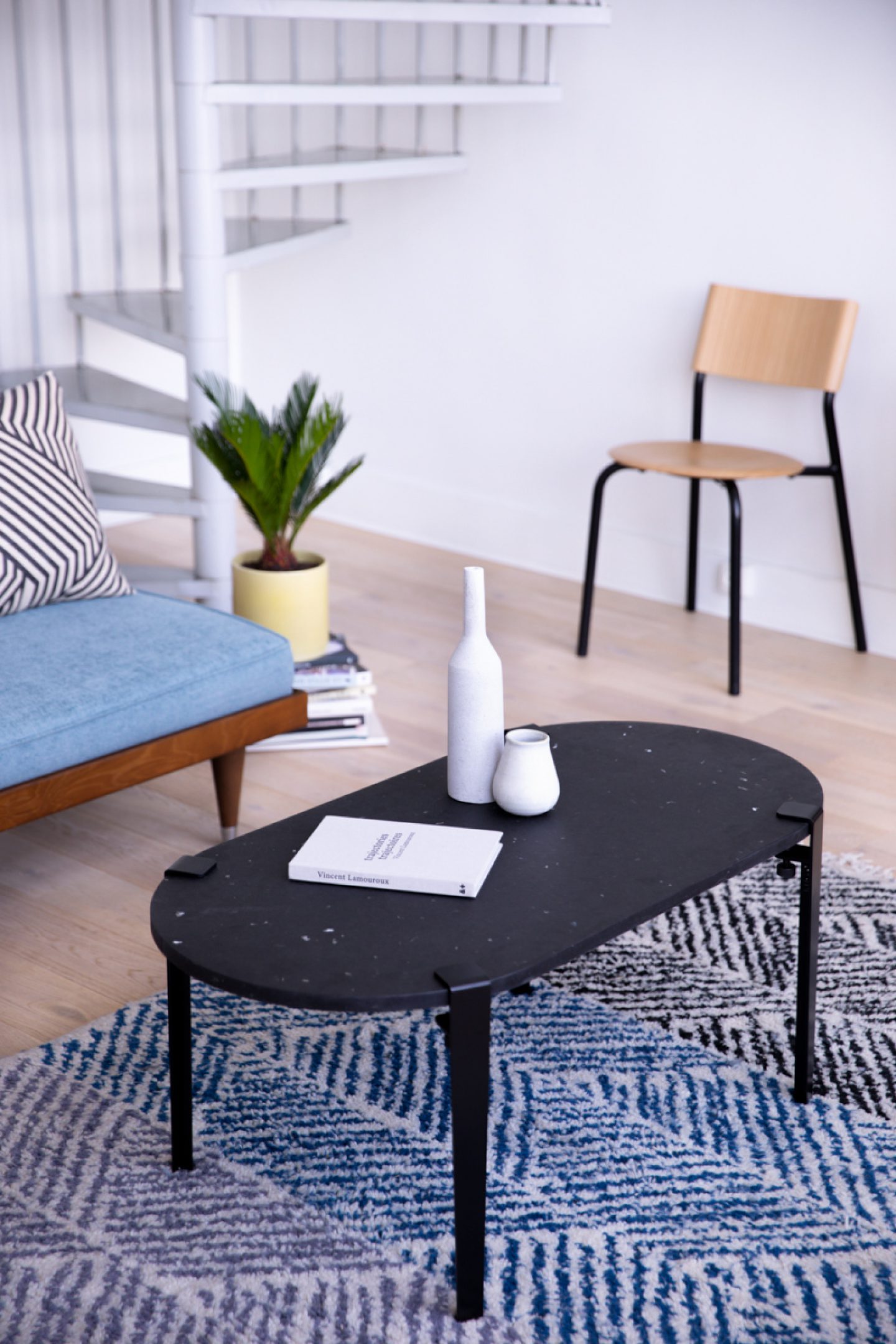
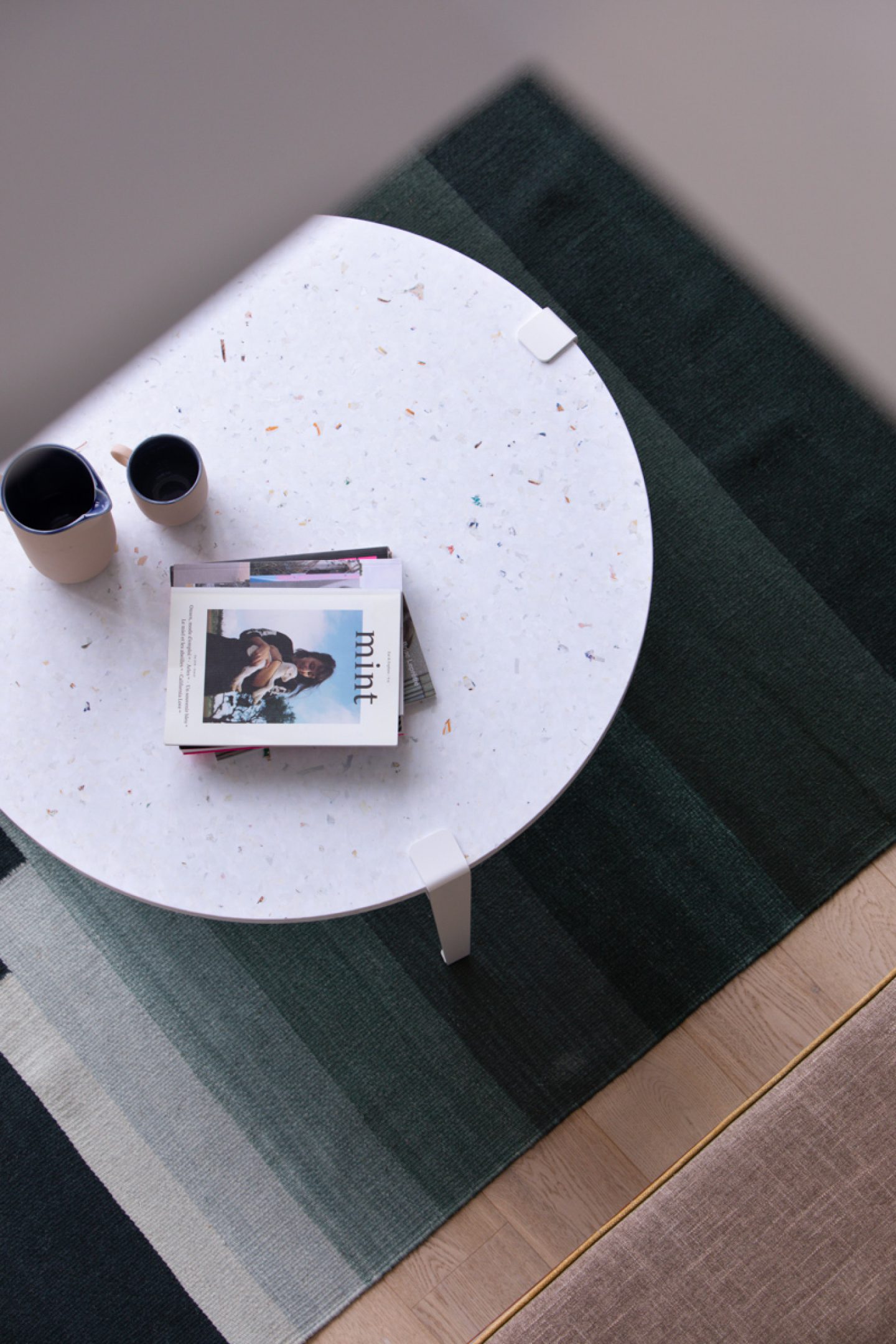
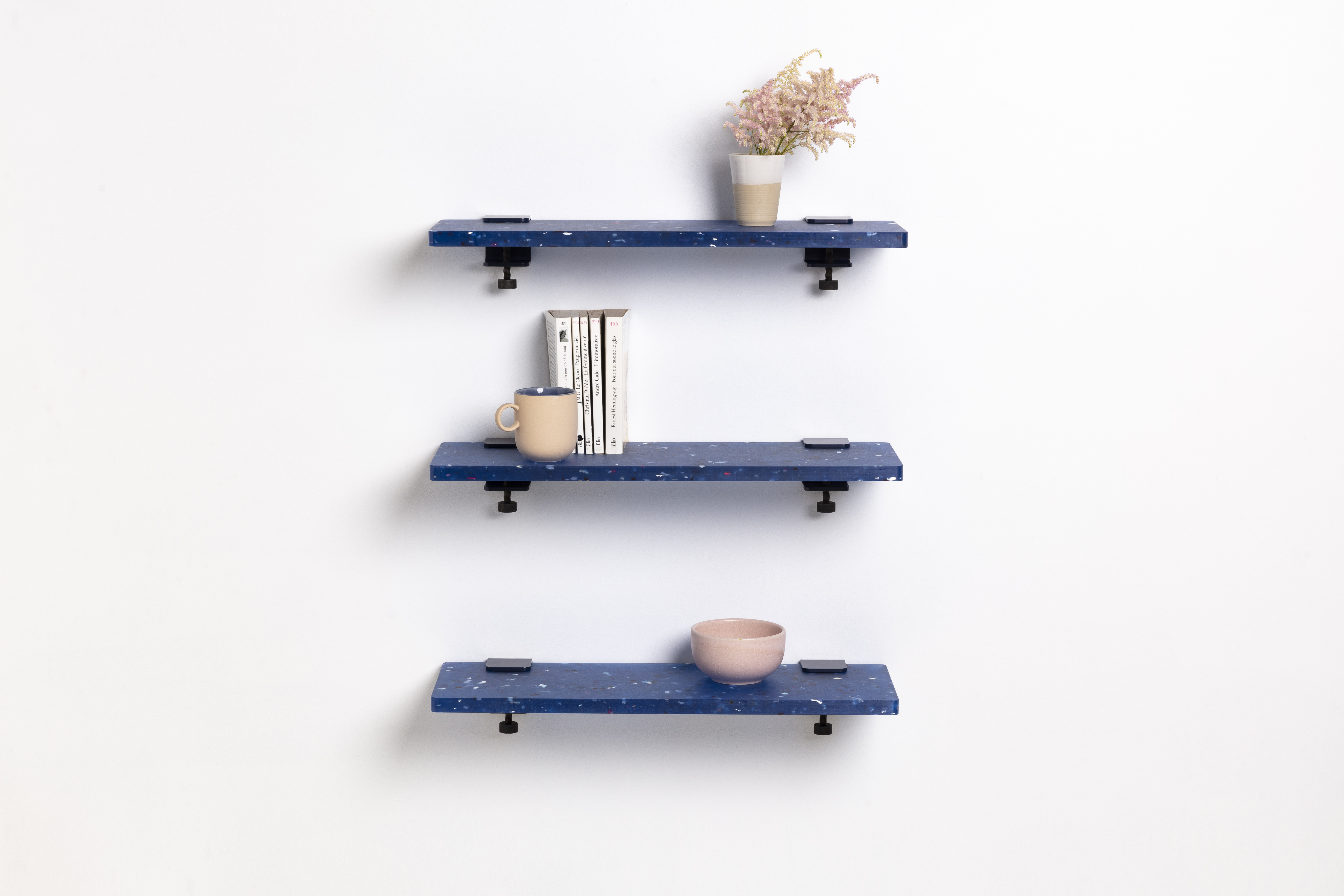
Tip Toe is a French brand with a mission to make sustainable, well-designed furniture with lasting quality. It has launched a range of coffee tables and shelves made from recycled plastic which gives them a beautiful terrazzo look.
London based American designer, Jennifer Manners, has launched a rug collection made from recycled plastic fibres with plastic waste cleaned from the sea.
Flock and Gaia makes rugs and mats from a variety of natural plant material from jute, date palm and okra stems to hyacinth.
Follow us here and subscribe here for all the latest news on how you can keep Thriving.
Stay up to date or catch-up on all our podcasts with Arianna Huffington here.


